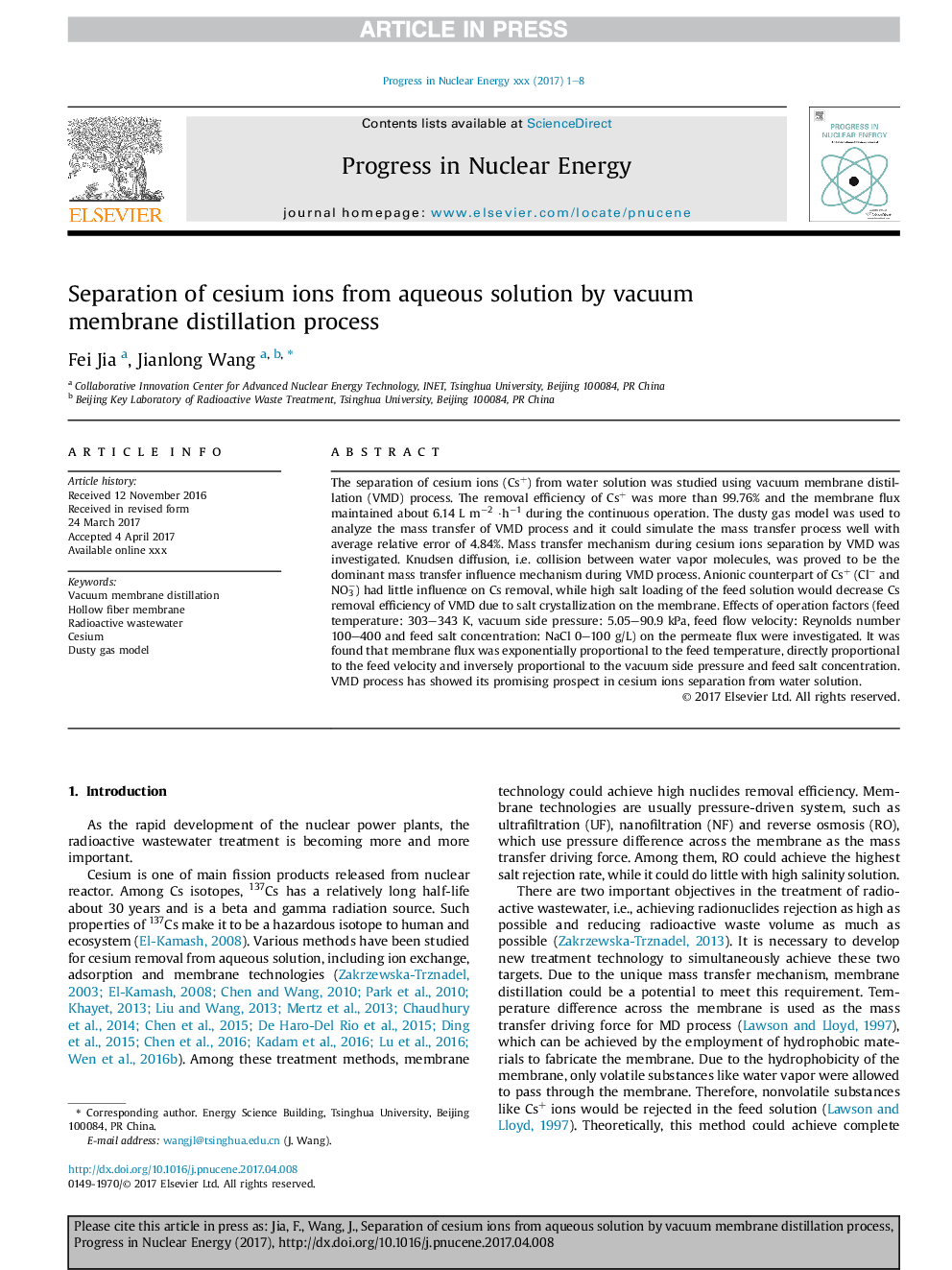| Article ID | Journal | Published Year | Pages | File Type |
|---|---|---|---|---|
| 5478069 | Progress in Nuclear Energy | 2017 | 8 Pages |
Abstract
The separation of cesium ions (Cs+) from water solution was studied using vacuum membrane distillation (VMD) process. The removal efficiency of Cs+ was more than 99.76% and the membrane flux maintained about 6.14 L mâ2 ·hâ1 during the continuous operation. The dusty gas model was used to analyze the mass transfer of VMD process and it could simulate the mass transfer process well with average relative error of 4.84%. Mass transfer mechanism during cesium ions separation by VMD was investigated. Knudsen diffusion, i.e. collision between water vapor molecules, was proved to be the dominant mass transfer influence mechanism during VMD process. Anionic counterpart of Cs+ (Clâ and NO3â) had little influence on Cs removal, while high salt loading of the feed solution would decrease Cs removal efficiency of VMD due to salt crystallization on the membrane. Effects of operation factors (feed temperature: 303-343 K, vacuum side pressure: 5.05-90.9 kPa, feed flow velocity: Reynolds number 100-400 and feed salt concentration: NaCl 0-100 g/L) on the permeate flux were investigated. It was found that membrane flux was exponentially proportional to the feed temperature, directly proportional to the feed velocity and inversely proportional to the vacuum side pressure and feed salt concentration. VMD process has showed its promising prospect in cesium ions separation from water solution.
Keywords
Related Topics
Physical Sciences and Engineering
Energy
Energy Engineering and Power Technology
Authors
Fei Jia, Jianlong Wang,
